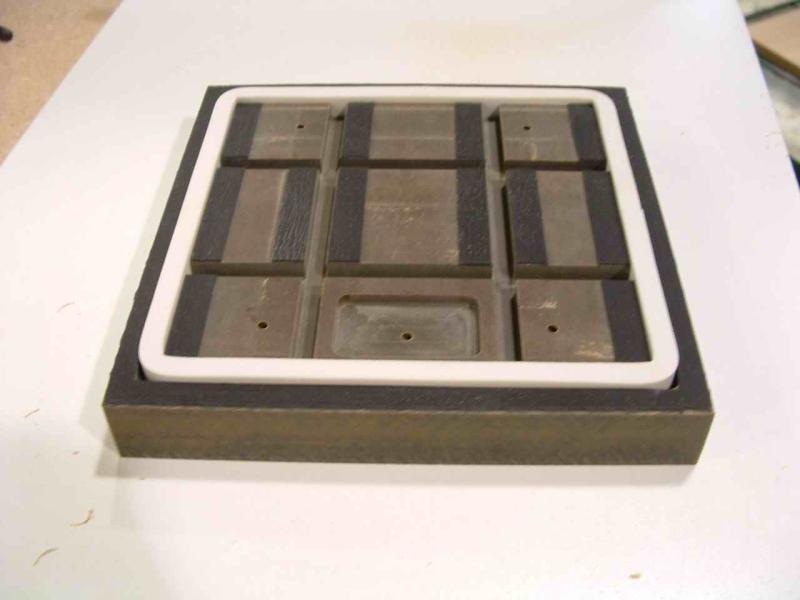CNC Machine Vibration in 3D Path Cutting
Machine controllers may introduce vibration when cutting complex three-dimensional curves. The problem may improve if you lower the acceleration settings. March 12, 2009
Question
We are running a Multicam 5000 series doing 3-D work, and I have noticed that on certain movements of the gantry, the machine takes on or creates a certain amount of vibration. We are only cutting foam, so it's not a material issue. If I slow the machine down I can get it to go away, but do I need to? Iím wondering if any of you guys out there with even heavier machines notice vibration like this, and should I be concerned about wear and tear? Itís not a vibration that affects quality of cut, just the machine wear.
Forum Responses
(CNC Forum)
From contributor C:
Take a look at your acceleration settings.This is where I am able to get the most significant reduction in "vibration" related surface problems. Going from an acceleration of 15 ipm to say 10, makes a huge difference. Of course it does slow the program down, in one part I cut, that change equates to a 44 minute difference. But with the lighter machines, you have to pick your battles.
From contributor J:
What IPM and on what axis is this happening at?
From the original questioner:
As best I can tell, when the gantry is moving either forward or backward and the z-axis is moving up or down at the same time, to cut an angle, as opposed to following a smooth arc, is when it happens. If it's cutting a smooth arc, I don't have this issue - and just to mention, this machine is I believe around 8,000 lbs. We are running this at 400 IPM while cutting foam. I will have to look for the acceleration settings.
From contributor B:
400 IPM is turtle speed. Even on their 3000 series shouldn't have any vibration cutting foam or even wood materials.
From the original questioner:
I hear you - 400 is slow. When we do just 2-D work, we normally cut anywhere between 800-1100 IPM. We get through .75 Baltic birch in a single pass with no vibration. It's just when doing 3-D work that we have to slow down.
From contributor G:
The problem is likely that the 3-D work is a whole bunch of small line segments, that, when in 3D, sometimes don't run as smooth as similar lines in 2D.
With the WinCNC control software (I use the older dos version), it tries to smooth the path in such cases, but the more it detects a change in direction, the more it slows down between each line segment. For some reason Z moves seem to make a big difference, maybe two changes makes an exponentially bigger change in the controller's view.
That slowdown is why changing the acceleration would help. The best bet, if this even exists and you controller can handle it, is to find some software that can fit 3-D curves to your toolpath, so that you don't have to slow/accelerate as often.
From contributor M:
Sounds like you are cutting a lot of straight line segments that are very short. Your machine is probably using high speed machining and hitting each block exactly before moving onto the next point. With Fanuc controllers, you can turn off high speed machining or look ahead with a G8P0 and this will smooth out machine movements, but also reduce accuracy of the machine.
With 3-D machining you will see reduced resolution, but increased cycle times even with slower feed rates. There are third party software apps that will optimize the code to get higher resolution, and better feed rates. See your machine reseller see if you can turn off the look ahead. If you are only cutting foam, it probably won't matter. By the way, G8P1 turns it back on.
From contributor B:
Well, if you're doing 3-D works and a lot of it, the wear and tear is going at a much greater rate. The vibration is probably coming from the speed of the machine jerking back and forth in short lines/arcs movements. Vibration improves at slower speed - depending on what you cutting, 3-D engraving or surfacing are two different things. If you're doing 3-D engraving, then 400 IPM is fast. It needs to be around 200 IPM depending on the length of lines, arcs, and cuts in general.
If you're doing 3-D surfacing, you shouldn't experience any vibration unless your surfacing is very short lines, arcs, segs, etc. You'd experience vibration on most moving gantry machines because moving gantry machines tend to run faster than moving table and the moving gantry machines are lighter. This is not to say anything about the machine you are using, but you'd experiencing this with probably all brands of moving gantry machines out there. The only way to avoid it is to slow down your speed.
From contributor H:
When we do this type of work we always reduce our acceleration by 75%. It improves the smoothness by about that same ratio. Give it a try and you should see the bulk of the vibration go away. We leave the feed rate alone. That is not the issue. With thousands of short segment cuts the machine never gets up to speed anyway.
